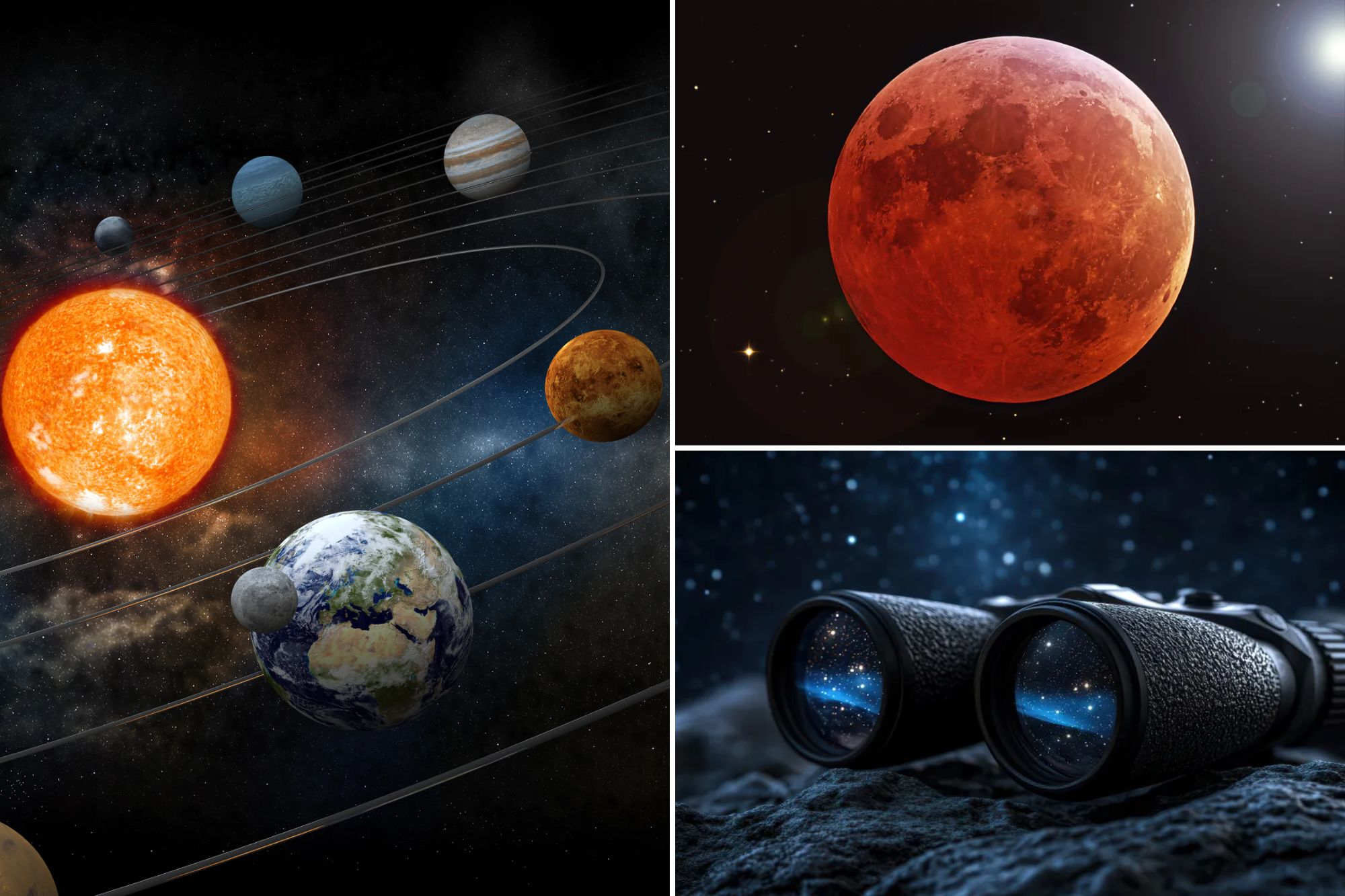
A six package of planets will line up and light the night sky this month, people.
Venus, Mars, Jupiter, Saturn, Uranus and Neptune will be lined up for our viewing pleasure-from now to mid-February.
When was the last time all the planets were in line?
A planetary extension descends, up, when more than two planets are lined up in the sky.
If the three planets are lined, it is known as a mini-planet stretch; Four does for a small planetary extension, five or more are considered large, and in the case of rare ultras that eight are in approximation, we have a large or full planetary extension.
This does not mean that everyone will be in a straight line in space- on the contrary, during stretching, they are tightly assembled on one side of the sun.
As Time Magazine reports, a planetary parade is largely an optical illusion. Unlike the 1974 extension of Jupiter, Saturn, Uranus and Neptune captured by the Voyager spaceship, the visible planets this month will be thrown through the sky at various depths, distances and positions.
Time compares the phenomenon with “the random setting of six different people in six different points in one field and positioning yourself so that you can collect them all in the lenses of your camera immediately.”
There are eight planets in our solar system, nine if you calculate the planet of dwarf Pluto.
Because we live on Earth, the maximum number of planets we can see from our advantage, for now, is seven or eight if Pluto is in the mix.
However, these lamps are not always in the same direction or sector – but are laid around the solar system and the sun in different positions.
When we have five or more planets entering a small area of heaven, an extension has improved in the status of parade, not an official astronomical term, but the one used quickly, loose and with a strange touch than those spatial geeks usually allow.
The last time there was a parade of seven plans was in June 2022.
According to NASA, Parades Planet “are not super rare, but they do not happen any year.”
This month’s event makes the cut – or walks in line – if you want.
Parade of planets 2025 dates
The best time to see the Planet parade is from sunset to 9:30 pm with local time. Saturn and Venus will convenience with each other in the southwest, with Mars in the East and the Gas Gas High Jupiter.
The last spectacle of space will be visible every night, allowing the weather, from now to mid -February, with two main dates of stay.
On January 21, Jupiter and Venus will shine more as they climb to the night sky. Meanwhile, the moon will remain under the horizon until after midnight, resulting in a darker sky that offers a clearer view for stargazing and observation of the planets.
On February 1, Venus and the Thumbnail’s crescent moon will appear closely together in the southwest sky for several hours before descending below the western horizon.
Where to look for planetary extension
Just as with all the scary cosmic phenomena, the closer you approach the dark sky communities and the further away from the light pollution, the more your main appearance will be. Allow at least 30 minutes for your vision to fit in the dark.
As you use your phone, in some ways, it will reduce your dark sky’s viewing experience using an astronomy application like Starwalk ensures that you are looking up and on the right target.
The good news? The splendor of the planets ensures that as long as the weather allows, you will be able to see the show in light -contaminated cities.
Venus, Mars, Jupiter and Saturn will create a comprehensive naked eye vist, but you will need a telescope or a pair of high power binocs to capture the eyes of Neptune and Uranus.
Mars will make his approach narrower to Earth in two years, and thus, the powerful red planet, called God of War, will look brighter, bigger and bolder in night sky . This point of the Martian call will further strengthen the extension experience.
Next month, on February 28, 2025, Mercury will join the cosmic lineup, means seven planets: Saturn, Mercury, Neptune, Venus, Uranus, Jupiter and Mars will be united for our pleasure of viewing.
Get it while you can, people.
Astrological importance of planetary extension and current planetary positions
Speaking astrologically, when the planets line up this month, Venus, Saturn and Neptune will be in fish opioid baths. Mars will be retrograde and bonded by platform shocks and cancer umbilical noise, while Jupiter will be in hyperverbal controversy as Cardio Gemini. Uranus will be moving away from the Bukolic pastures, motivated by the bull food.
When Mercury joins the formation in February, he will be dreaming and future formation in the fixed climate of Aquarius.
Astrology 101: Your Star Guide
Astrologist Reda Wigle researches and reports unfairly again in planetary configurations and their effect on each zodiac sign. Its horoscopes integrate history, poetry, pop culture and personal experience. To reserve a reading, visit its website.
#planetary #magic #extension #happen #month #happen
Image Source : nypost.com